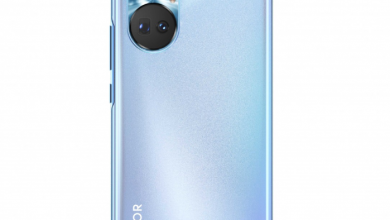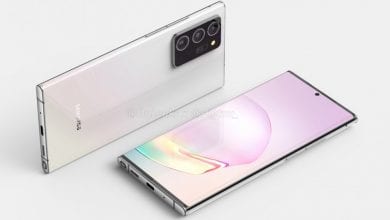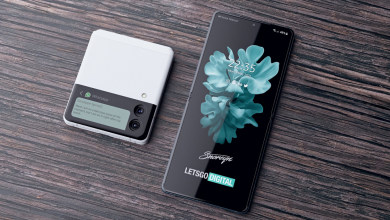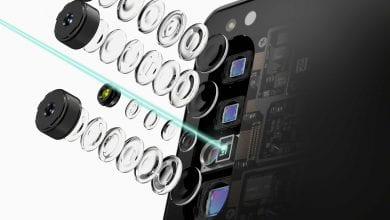Resident Evil 4 for iPhone review
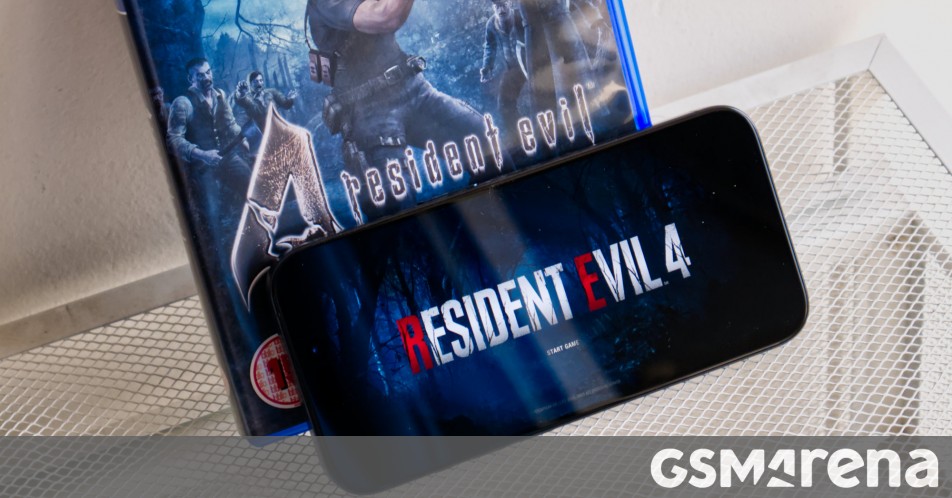
Resident Evil 4 has a special place in gaming history. Released back in 2005 for the GameCube and later for the PlayStation 2, it was a paragon of the third-person survival horror genre with its incredibly tense action sequences, amazing level design, terrifying enemies, and memorable characters and writing. It carved a niche for itself and it was for many — including myself — their favorite installment in the series.
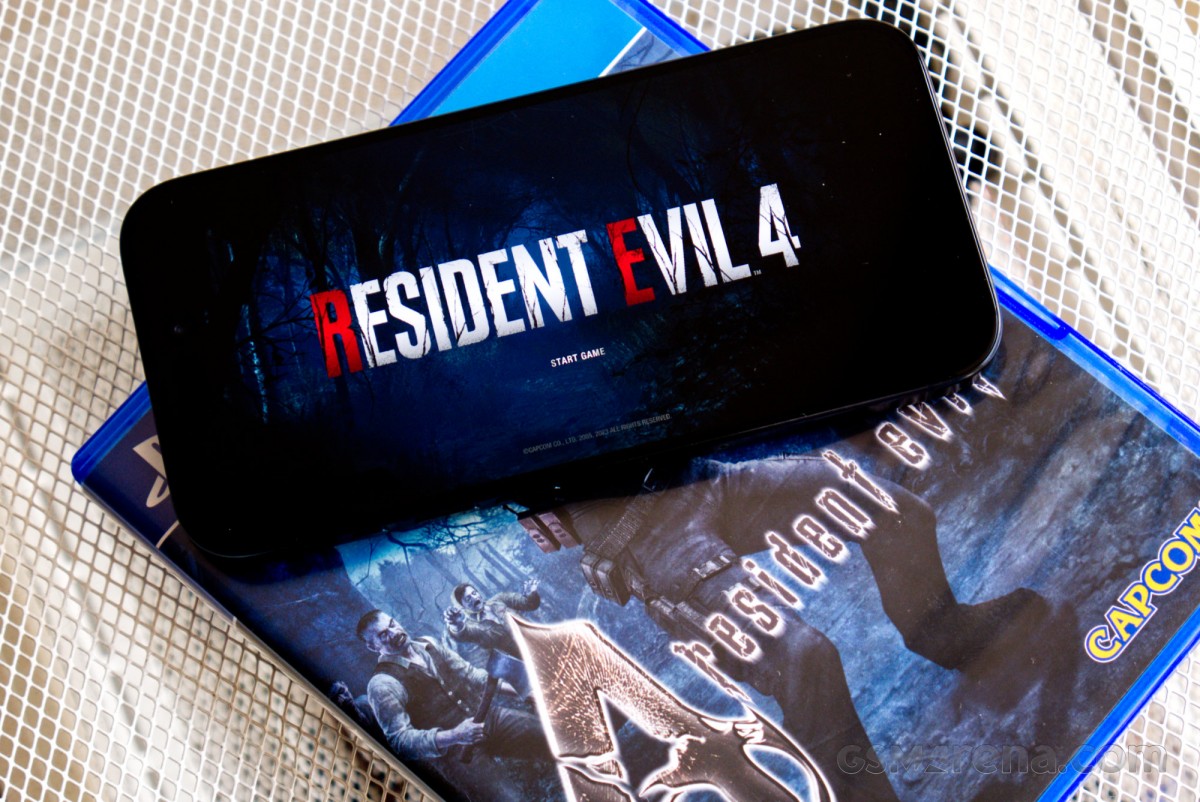
Having played that version on a PS2 all those years ago, I was genuinely stoked to see it getting a proper remaster earlier this year along the lines of Resident Evil 2 and 3 for modern platforms. What I wasn’t expecting was a port for the iPhone, that too within the same year. Imagine my surprise then that I was able to play this full-blown console and PC release and game of the year nominee on my dinky little iPhone 15 Pro review unit.
The new version of the game, simply titled Resident Evil 4, is a complete remake of the original, featuring entirely new visuals and level designs, voice acting, music, and everything else you can think of. The only thing that remains the same is the story and the general gameplay. The game was launched on the consoles and PC back in March of this year and is now also available on the iPhone 15 Pro devices as well as iPads and Macs running the M-series processors.
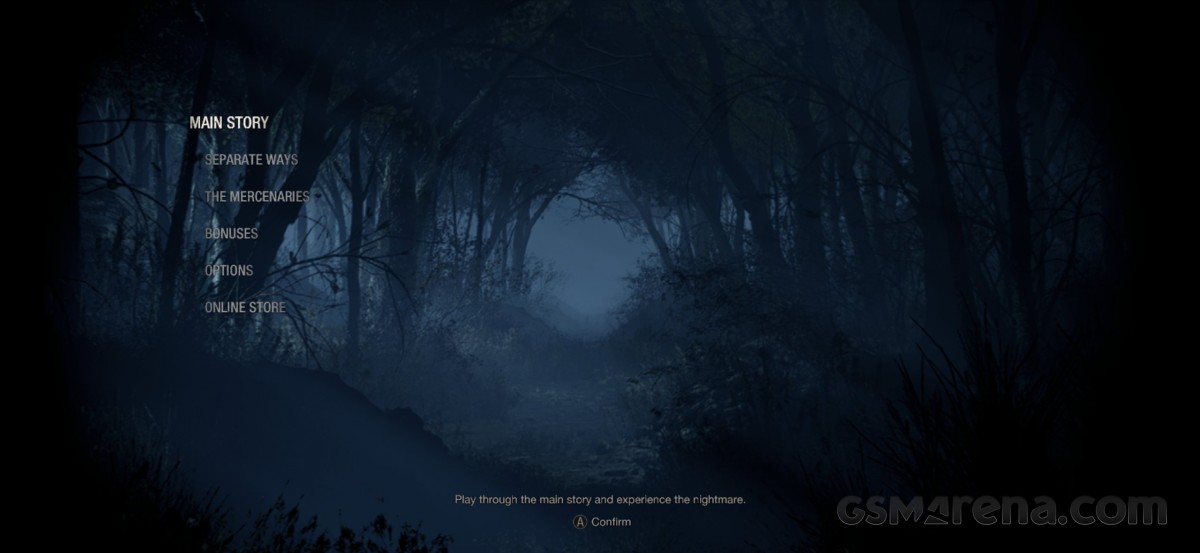
First things first, the Resident Evil 4 app is universal, which means if you purchase it once it will work on your iPhone, iPad, and Mac without having to purchase separately. This was not the case with Resident Evil Village, which needed to be purchased separately for the iPhone/iPad and the Mac.
The game can be downloaded for free, which gives you access to the initial ten minutes or so of gameplay, which ends after the first big fight in the opening village section of the game. This is the same as the separate demo released for the consoles and PC, except in this case, you can just pay $30 to continue playing and your progress in the ‘free’ section will carry over, unlike in the demo. The free section of Resident Evil 4 is much shorter than for Village but should still give a decent idea of what to expect from the rest of the game.
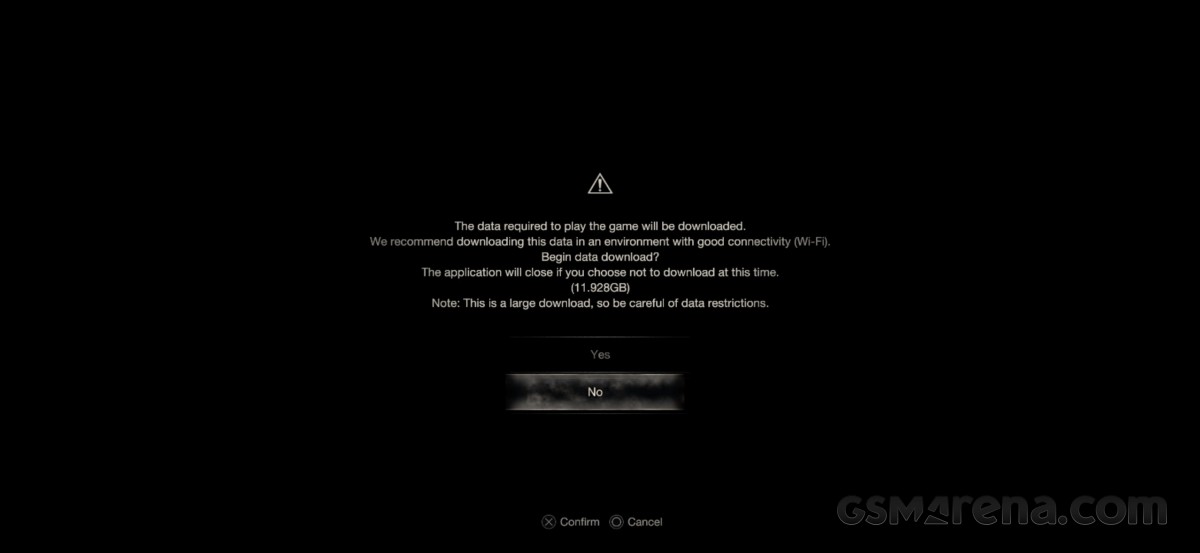
The game is initially a 686MB download from the App Store on the iPhone. It will then download an additional 12GB to be playable. If you purchase the full game and the DLC, you will have to download yet another 17GB. That’s around 30GB in total, which isn’t bad considering the size of the game. Expect to download twice as much data on the Mac.
Speaking of DLC, Resident Evil 4 for Apple platforms also offers the recently released Separate Ways mode, where you play as Ada Wong, who makes brief appearances in the main game. While the protagonist Leon is doing his thing, Wong has her own mission to carry out at the same time and it’s interesting to see how their paths cross as they go about their *drum roll* separate ways. If you enjoyed the main game, this is absolutely worth picking up. The other DLC are mostly cosmetics and weapon upgrades.
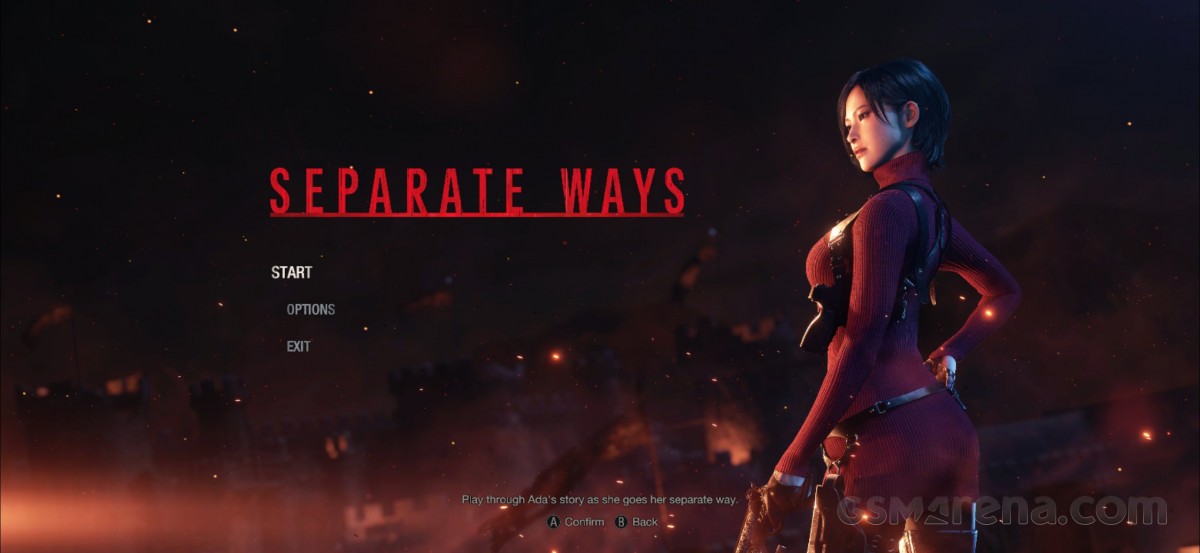
At this point, I will reiterate what I said in the Resident Evil Village review, which is that this isn’t a review of the game itself but rather a review of the specific iPhone port and the experience of running the game on a phone. There are plenty of great reviews out already if you just want to know more about Resident Evil 4 the game. Alright, let’s move on.
After downloading the game on an iPhone 15 Pro, I jumped into the menus to see what has changed from the console and PC versions. The biggest difference is the lack of meaningful graphical settings. There are also no options to adjust the resolution or the frame rate. In fact, the only visual settings available are for depth of field, motion blur, and lens distortion.
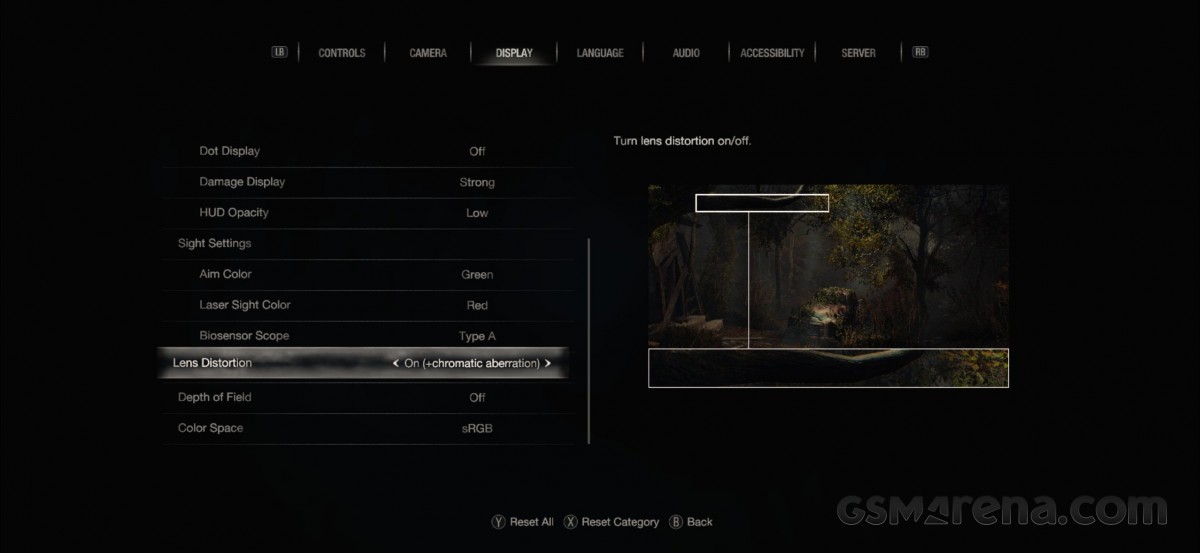
This is the ideal solution and exactly what I had asked for in my Resident Evil Village review. While it limits scalability for future devices, it does ensure players today will get an optimized experience out of the box for their devices and won’t have to tinker around endlessly in the menus to get things working properly, which was an issue with Village. Don’t worry if you play the game on a Mac, however, as the settings are just hidden for mobile and are visible when you launch the game on a desktop.
Aside from that the only change is the addition of on-screen controls for mobile devices. These are identical to those I covered on the Village port; they have a fair bit of customizability and ensure the game can still be played if you don’t have a controller. However, the game is simply not designed for on-screen controls, and like with Village, Capcom recommends you use a physical controller. Also like Village, you cannot use a mouse and keyboard to play on the iPhone but that may just be an iPhone thing.
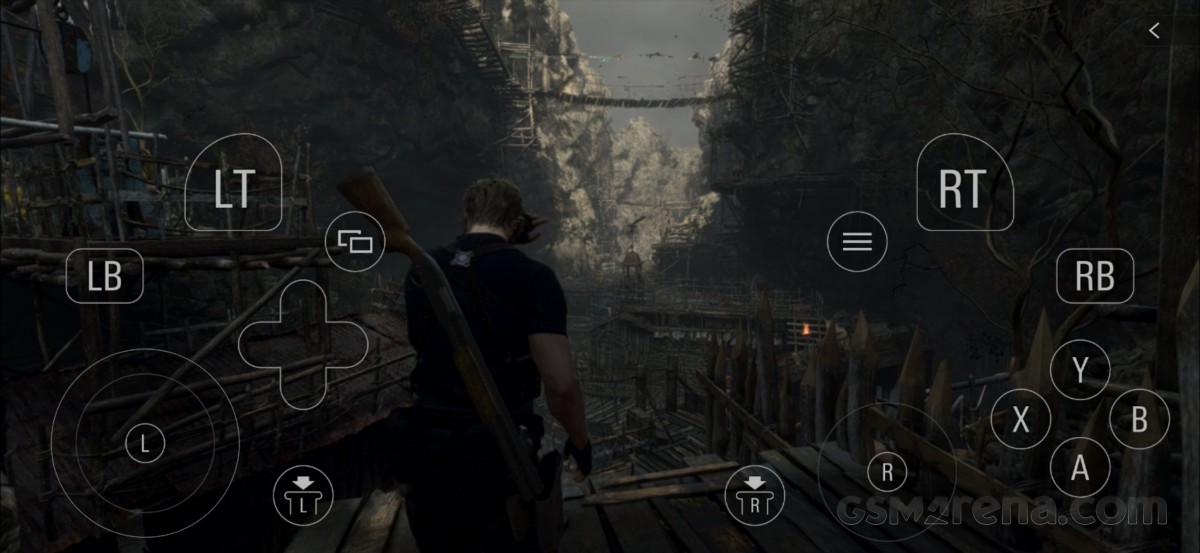
Jumping into the game I realized that it is locked to 30fps. This is fine as it’s unlikely the game would hit 60fps or higher on the iPhone. An unlocked frame rate option may be nice in the future when iPhone hardware is powerful enough or gets variable refresh rate displays but for now, a steady 30fps is a good enough target, especially considering the slow-paced nature of the game.
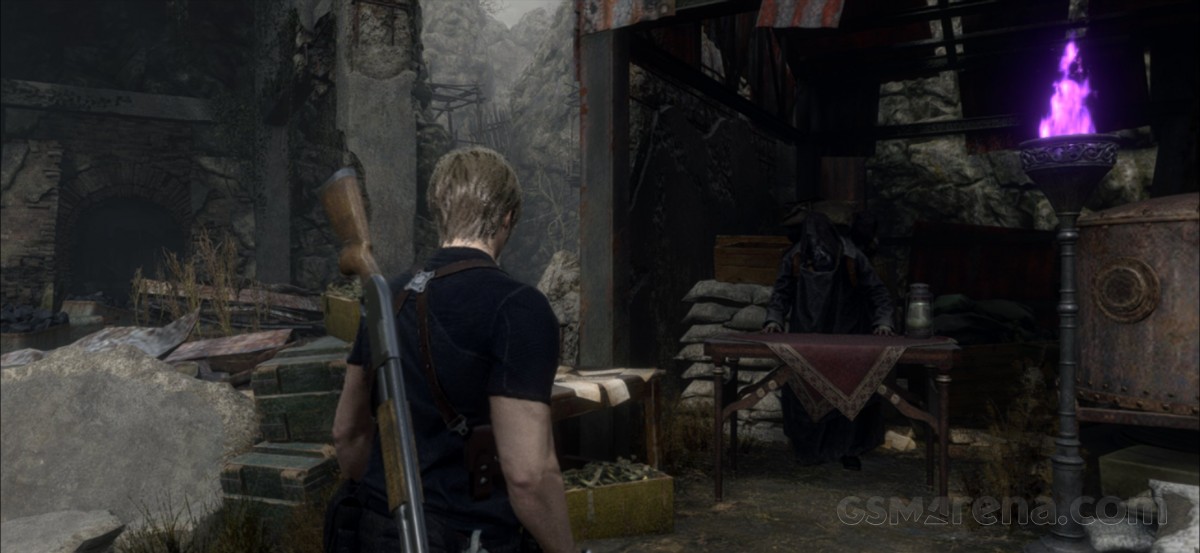
However, that’s just the beginning of the optimizations Capcom has in store for this version. The game runs at a seriously low resolution. The final output resolution of the game on the iPhone 15 Pro is 720p but the internal rendering resolution seems to be a quarter of that at 360p. The game then uses MetalFX to upscale the image to 720p. There is no evidence of dynamic resolution scaling here as the image looks uniform throughout the game. There are no toggles for MetalFX in this game on the iPhone but you get the option to switch between Performance and Quality mode or to disable it entirely on the Mac.
Unfortunately, with such an incredibly low base resolution, MetalFX has its work cut out for it. The image looks surprisingly stable for distant objects like trees and is soft but reasonably detailed up close. But the issue comes in the form of disocclusion artifacts on high-frequency detail, which can be distracting. Any time an object moves, it leaves a trail of fizzle around it as the objects behind are disoccluded, which is a result of the reconstruction algorithm not catching up fast enough. In the video below, you can see the area around Leon’s head and weapon fizzle as the trees behind take a split second to be reconstructed. The video has been brightened to make this easier to see.
Also noticeable in the clip is the extremely fizzy appearance of Leon’s hair. The Apple Silicon version of the game does not have the dynamic hair strands option found on the consoles and PC, which renders each strand individually. That’s fine as it didn’t look particularly great but even the game’s standard hair rendering suffers greatly from the extremely low rendering resolution and the anti-aliasing seemingly does not work at all.
This, unfortunately, is the weakest part of the visual presentation as outside of costumes and other playable characters, Leon and his lustrous golden locks are always on screen in a prominent position that naturally draws the eye and the sheer amount of fizzle looks extremely poor. The moving strands of hair also bring up the issue with disocclusion artifacts although they are hard to notice over the hair itself.
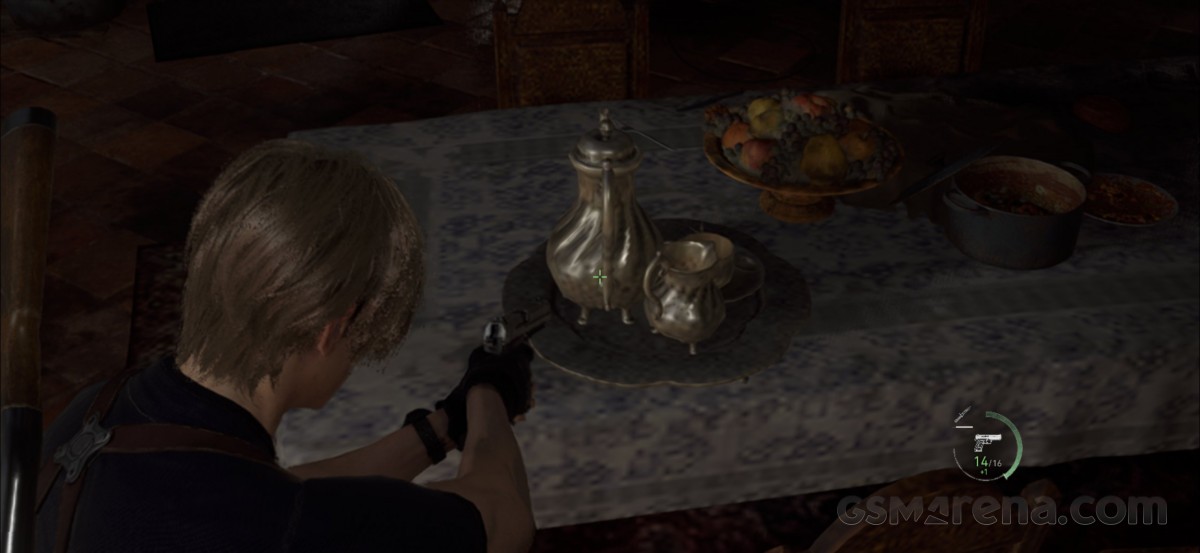
The other major issue is with texture streaming. This was an issue on the PC version of the game as well, where the texture rendering was somewhat erratic at lower settings, causing some textures to be sharp and others to be blurry, even if they were right next to each other. This issue is present on the iPhone as well, as the texture cache setting will undeniably be set to the lowest value internally to account for the low system memory. Even when the textures are of a higher resolution, they can take several seconds to stream in, which can be quite noticeable when solving one of the many puzzles in the game.


Textures before and after they load in
Aside from that, I didn’t find many things to take offense to. Objects don’t usually cast shadows and the ambient occlusion is of a lower quality but the game still has a good amount of shading that makes objects appear grounded. The game does not have the infamous RE Engine screen space reflections, which is just as well as they look quite poor on other platforms, and the few reflections you see seem to be entirely cube map based. Volumetrics are of a lower resolution and aside from a rather aliased flashlight beam aren’t particularly offensive.
But despite the extent of the cutbacks made for this version, in action, the game looks fine especially since you are playing it on a small screen. Even at its lowest settings, the level design, character models and animations, and the artwork manage to shine through and it still looks like you are playing a fancy console or PC game rather than a mobile one. It’s almost an unfair comparison as there’s nothing else with this level of visual fidelity out on mobile currently, aside from Capcom’s own Resident Evil Village, and even that isn’t as impressive. This is truly a modern showcase title and to think it’s possible on a phone is mind-boggling.
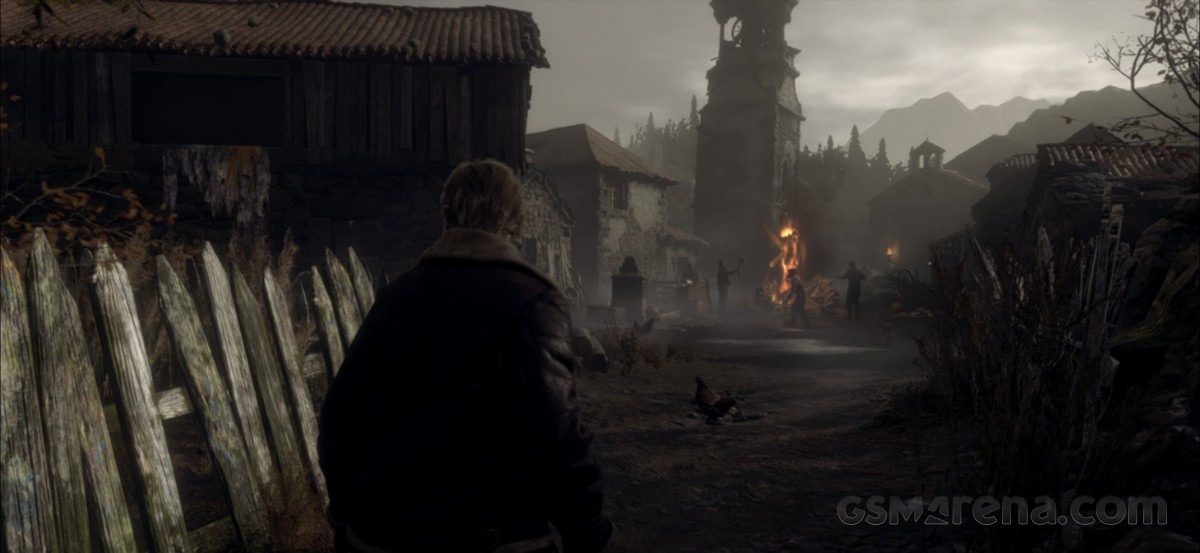
After visuals, the frame rate is the other major part of this discussion. I’ve already mentioned that it’s capped to 30fps but whether it can maintain that cap is a different issue. For the most part, I think the game runs well and sticks close enough to its frame rate cap to not be distracting. But the frame rate does tend to drop during busy combat sequences, such as the chaotic village fight in the first few minutes of the game. There are also the annoying hitches that can happen when entering a new area, which have made their way here from the PC version. This one is likely an issue with the engine rather than the hardware or this specific port.
Outside of these, the game remains quite playable. Motion blur certainly helps smooth out the animations and I would recommend enabling it as it’s disabled by default. You should absolutely disable the chromatic aberration effect, however, as it makes the game look softer than it is.
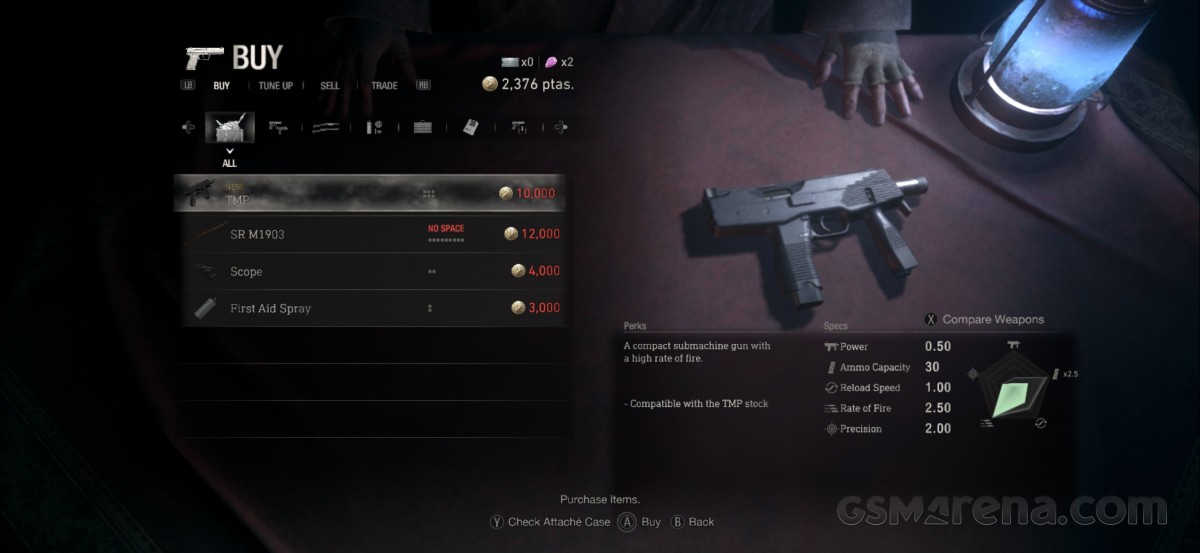
I would also like to note that Resident Evil 4 ran flawlessly on the iPhone 15 Pro during my testing, which was not at all the case with Village. There were zero crashes and even after extended periods of gameplay there weren’t any issues.
Other things to note include the HDR presentation, which is once again excellent and makes great use of the iPhone 15 Pro’s bright display. The sound is also very good but it’s just stereo and I feel like they could have capitalized on the phone’s spatial audio capabilities. The game renders in true ultra-wide on the iPhone although the cutscenes are 16:9 for some reason, even though they are rendered in-game.
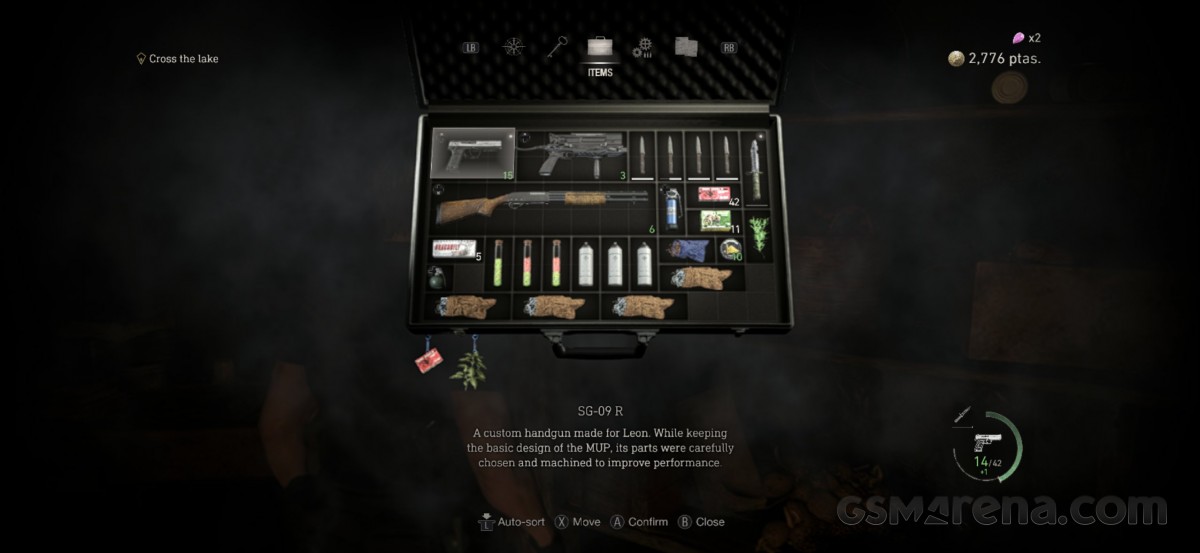
Loading times are also quick; a fresh load from a save takes about 9 seconds and there are no other loading screens within the game itself. The game also supports iCloud backup and the saves are synced across the iPhone, iPad, and Mac.
As an aside, I also checked battery consumption during gameplay. The iPhone 15 Pro consumed about half its battery from a full charge after an hour and a half of gameplay. This included playing at maximum display brightness, using a USB-C DAC for audio, and pairing an Xbox Wireless Controller over Bluetooth. The device does get a bit warm but it’s manageable in cooler climates.
Overall, I was impressed with the version of Resident Evil 4 for the iPhone, more so than Resident Evil Village. It does not feel like the Mac version was slapped onto a smaller screen but a more intentional, optimized, and refined build that shows the same care and attention you would get from a dedicated console release. It also helps that Resident Evil 4 is just the better game of the two.
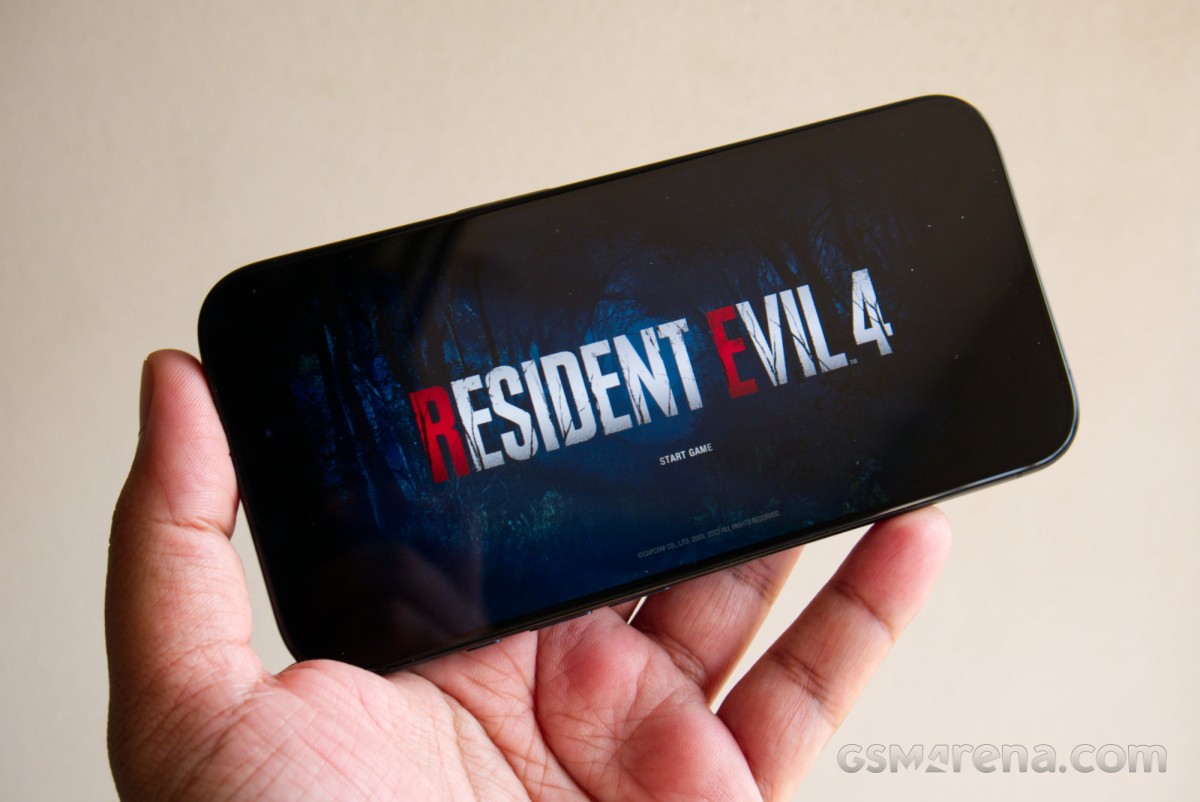
Now, I wouldn’t necessarily suggest you play this version if you have access to consoles or a powerful computer. But once again, I am in awe of the fact that this version even exists. A modern Resident Evil game with all of its content running natively on an iPhone would never have been on my 2023 bingo at the beginning of this year but Capcom and Apple delivered not just once but twice. It cannot be understated how impressive this is and as someone who enjoys not just playing but also analyzing the technical makeup of games, this has been a blast of a year.
Here’s hoping to more such amazing mobile ports in 2024.
المصدر : Gsmarena .
